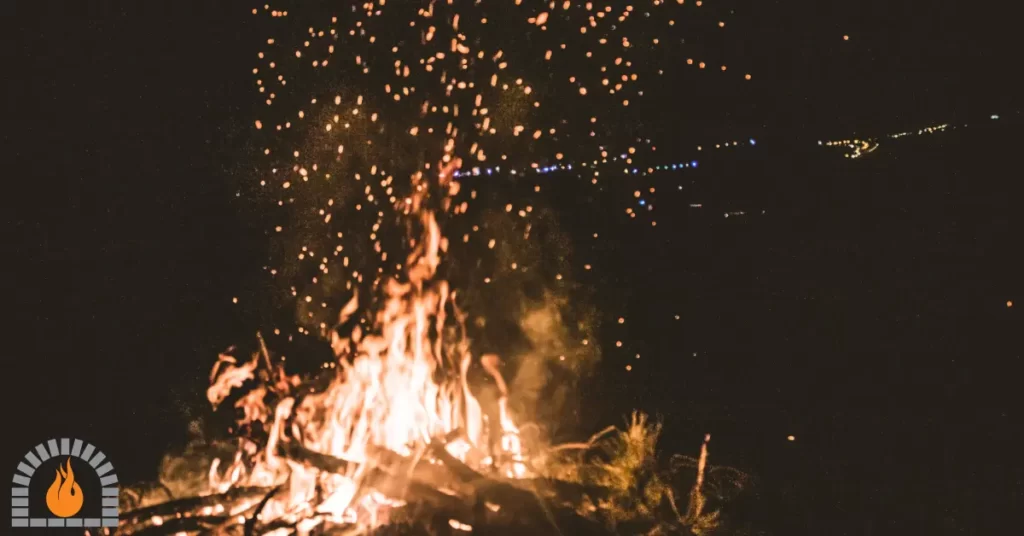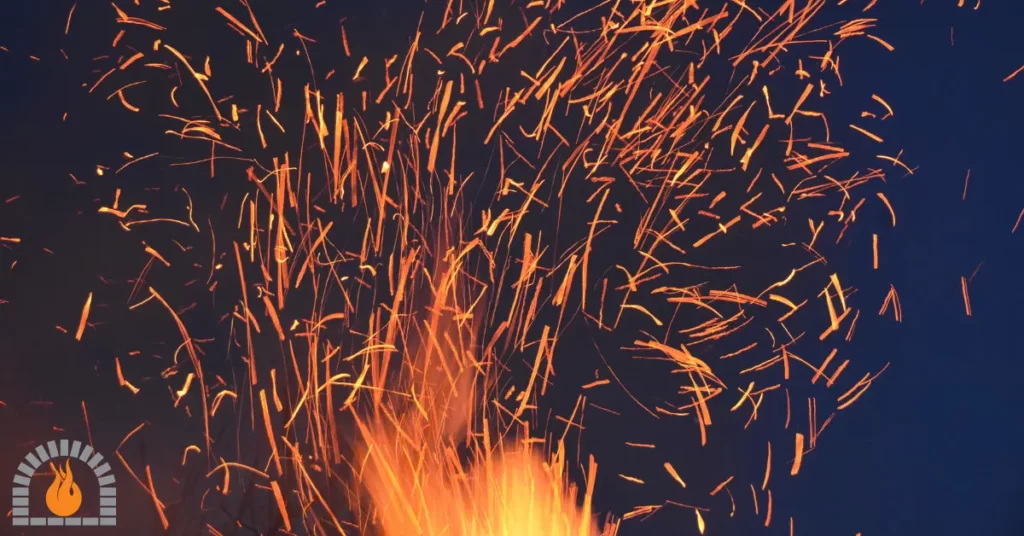There’s nothing quite like the cozy ambiance of a crackling fireplace on a chilly evening. However, for many fireplace enthusiasts, the joy can quickly turn into frustration when firewood starts popping and hissing unexpectedly. So, how to stop firewood from popping?
The sudden bursts of flames and snapping sounds not only disrupt the tranquil atmosphere but also pose safety concerns.
Overview
The key to preventing excessive popping lies in selecting the right type of firewood. Hardwoods, such as oak and hickory, are ideal as they contain less moisture. Avoid using softwoods like pine, which tend to have higher water content, leading to more popping.
Why is Firewood Popping?
Firewood popping is a common occurrence caused by the release of moisture within the wood. When wood is not properly seasoned, the water content turns to steam when exposed to heat, leading to the distinctive popping sounds. To minimize this, it’s crucial to start with well-seasoned firewood.

How To Stop Firewood From Popping?
- Choose the Right Firewood.
- Properly Season Your Firewood.
- Store Your Firewood Correctly.
- Preheat Your Firewood Before Burring.
- Focus on Regular Chimney Maintenance.
- Cut the Firewood in Optimal Size.
1. Choose the Right Firewood.
The key to preventing excessive popping lies in selecting the right type of firewood. Hardwoods, such as oak and hickory, are ideal as they contain less moisture.
Avoid using softwoods like pine, which tend to have higher water content, leading to more popping.
2. Properly Season Your Firewood.
Seasoning firewood is the process of allowing it to dry out before use. To achieve this, split your firewood into manageable sizes and stack it in a dry, well-ventilated area.
Ensure the wood is elevated to promote air circulation and allow it to season for at least six months to a year. Seasoned wood not only reduces popping but also burns more efficiently.
3. Store Your Firewood Correctly.
Even well-seasoned firewood can regain moisture if not stored properly. Keep your firewood off the ground by using a raised platform or pallets.
Cover the top of the stack to protect it from rain and snow, but leave the sides open for ventilation. This helps maintain the wood’s dryness and minimizes popping.
4. Preheat Your Firewood Before Burring.
Before placing firewood into a blazing fire, consider preheating it. This can be done by stacking the wood near the fire for some time.
Preheating reduces the shock of introducing cold wood to high temperatures, minimizing moisture release and subsequently reducing popping.
5. Focus on Regular Chimney Maintenance.
Popping can be exacerbated by a buildup of creosote in the chimney. Regular chimney maintenance, including cleaning and inspections, is crucial to ensure optimal airflow.
This not only minimizes popping but also reduces the risk of chimney fires.
6. Cut the Firewood in Optimal Size.
The size of your firewood can impact popping. Smaller pieces tend to pop more than larger ones.
Aim for larger, well-seasoned logs to create a more controlled and enjoyable fire experience.
When lighting a fire, resist the urge to use accelerants like gasoline. Instead, use kindling and allow the fire to build gradually. This not only enhances safety but also reduces the likelihood of excessive popping.

Related Posts:
Final Thoughts: How To Stop Firewood From Popping?
In conclusion, preventing firewood from popping involves a combination of choosing the right wood, proper seasoning, correct storage, and mindful fire-building practices. By implementing these tips, you’ll not only enjoy a quieter and safer fire but also elevate your overall fireside experience.
Remember, mastering the art of firewood is a journey, and with the right approach, you can create the perfect ambiance for countless cozy evenings.
Affiliate Disclosure: Fireplaceadviser.com is a participant in the Amazon Services LLC Associates Program. We may earn a commission when you click on certain links on this site and purchase.

Hello!! I am Jamal Khan. I often fix my home electric heaters and gas stove problems and research the common issues in the heating units to improve my knowledge and expertise. The aim of establishing fireplaceadviser.com is to share my expertise and knowledge with my audience.











